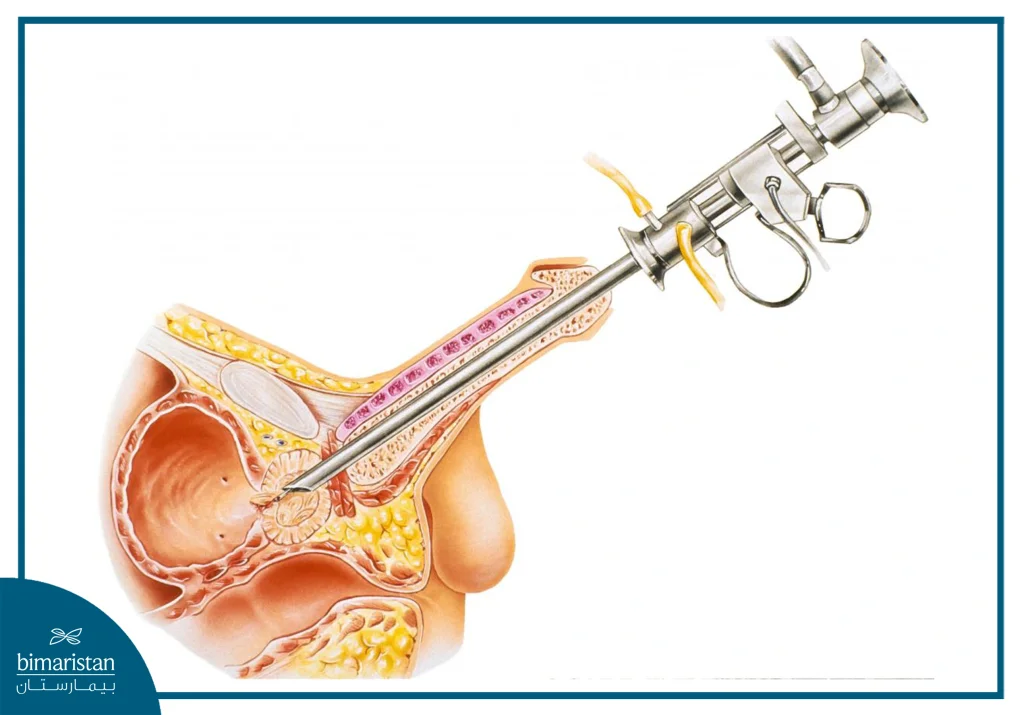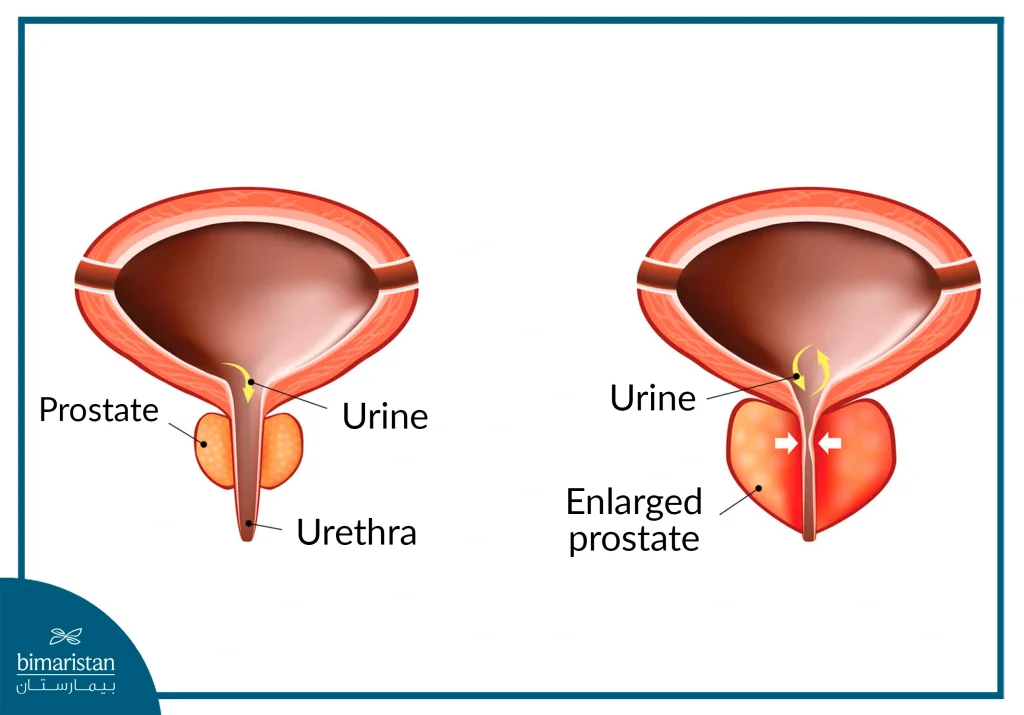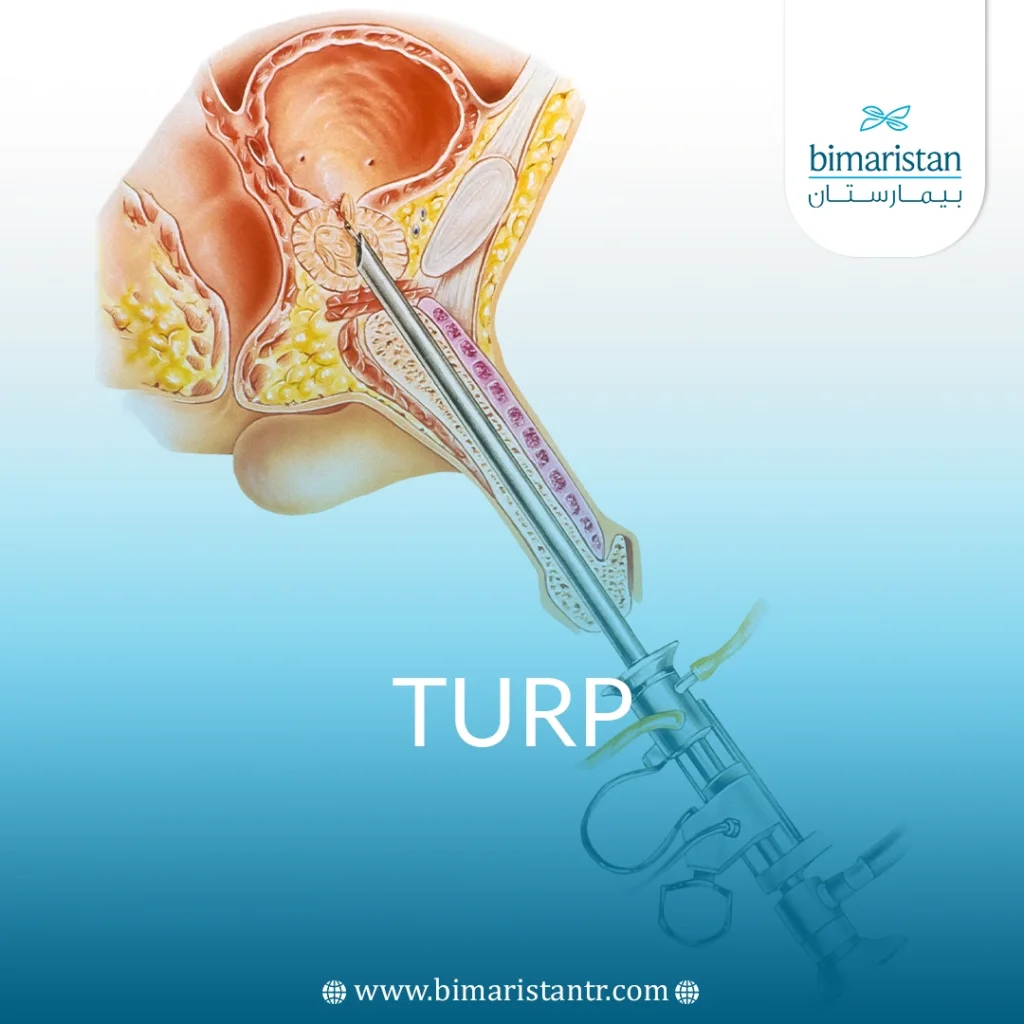Transurethral resection of the prostate (TURP) is the traditional method and the gold standard for removing enlarged prostates, with few complications and low cost in Turkey.
Benign prostatic hyperplasia (BPH) is a common disease that affects men as they age, and to get rid of the symptoms of prostate enlargement, transurethral resection of the prostate can be performed without making a surgical incision by inserting the resectoscope through the penis, so let’s learn more about this procedure.
How is transurethral resection of the prostate (TURP) performed?
Transurethral resection of the prostate effectively reduces the problems associated with benign prostatic hyperplasia. Most men with benign prostatic hyperplasia do not need surgery. They can carefully consider the pros and cons of different methods of treating benign prostatic hyperplasia.
Most men with benign prostatic hyperplasia usually live with their symptoms and don’t have an urgent need to make the decision to undergo surgery, but when the symptoms become too bothersome, patients seek treatment.
Reasons why transurethral resection of the prostate (TURP) is necessary
Prostate-related issues can be very troublesome, such as increased difficulty in urinating, despite the use of medications that have not produced satisfactory results for the patient.
If an enlarged prostate is causing other medical issues, such as recurrent urinary tract infections or bladder stones.
Treatment with medications may not be possible for medical reasons.
The decision will also largely depend on how the man feels about the potential benefits and harms of the procedure.
Although the surgery is very effective, it can lead to several complications.
What is the goal of surgery to treat an enlarged prostate gland?
The goal of the surgery is to make the prostate gland smaller so that it no longer presses on the bladder and urethra.
In most methods, small instruments are guided through the urethra (transurethral) to the prostate, where they are used to remove tissue or widen the urethra to facilitate urine flow.
This type of procedure is known as Keyhole Surgery.
If the prostate gland is too large, it may be removed externally through an incision in the abdominal wall (“open surgery”). This is rarely necessary.
Many different surgical techniques and many different tools and devices can be used to remove and cut away excess prostate tissue in different ways.
What is the most common approach to prostate treatment?

Transurethral resection of the prostate (TURP) is the standard surgical technique (the gold standard).
This procedure involves inserting a thin tube called a telescope into the urethra and guiding it to the prostate.
The telescope is equipped with a small camera and an electrical suction ring that is used to remove prostate tissue mechanically.
The loop produces heat at the same time, which quickly blocks the blood vessels.
The cutting scope also has valves that regulate the release of fluid to flush out the removed tissue.
Transurethral resection of the prostate takes about 90 minutes and is performed under local or general anesthesia.
Men who undergo this procedure typically need a urinary catheter (a tube that empties the bladder) for a few days and are generally hospitalized for two to seven days.
Then, they need to rest and relax for a few weeks.
There are some variations of transurethral resection of the prostate (TURP), which are also considered standard treatments and have similar results and consequences to traditional TURP.
These methods include transurethral electrical vaporization (TUEVP), transurethral vaporization (TUEVP), and prostate plasmapheresis (PkEP).
Another well-established surgical procedure is called transurethral incision of the prostate (TUIP).
In this approach, the pressure on the urethra is relieved without removing any tissue from the prostate.
To do this, the surgeon makes one or two small cuts (incisions) where the prostate connects to the bladder.
This frees up a small space for the narrowed urethra and relieves pressure.
The advantage of this technique is that some side effects, such as bleeding or retrograde ejaculation, are less common.
But TUIP is only suitable for men with mild prostate enlargement.
The procedure may have to be repeated after a while.
How effective is transurethral resection of the prostate in Turkey?
Studies have shown that transurethral resection of the prostate (TURP) can permanently reduce prostate-related issues.
Nine months after transurethral resection of the prostate, about 75 out of 100 men experience some mild symptoms.
For example, they may feel the need to get up at night to go to the bathroom once.
But the rest usually benefit from transurethral resection of the prostate, hands down. However, side effects are common.

What are the possible consequences after transurethral resection of the prostate in Turkey?
The most common side effect of TURP is a “dry orgasm” or “dry climax” (retrograde ejaculation).
There is no semen during ejaculation, or it may be much less than usual, and instead, semen flows into the bladder. This can happen if the muscles that close the entrance to the bladder during ejaculation are damaged during surgery.
About 65 out of every 100 men have this side effect after transurethral resection of the prostate.
Although dry orgasms are not harmful and usually do not affect sexual pleasure during orgasm, they significantly reduce fertility.
Some men fear erectile dysfunction after surgery.
Although there is no guarantee that this will not happen, research has shown that permanent penile erection issues are rare.
Some people have also expressed the opinion that after prostatectomy, the relationship improves because they no longer experience unpleasant symptoms such as having to go to the bathroom at night.
Other possible consequences of transurethral resection of the prostate include Urinary tract infections (UTIs) and temporary loss of bladder control (urinary incontinence).
As with most operations, there is a risk of bleeding after the procedure.
In rare cases, the surgery can cause a narrowing of the urethra.
It is also worth noting that long-term consequences, such as permanent incontinence after the operation, are rare.
Transurethral resection of the prostate (TURB) can also lead to “TUR syndrome,” A condition associated with temporary nausea, vomiting, or general fatigue after the procedure.
Although rare, this complication can be life-threatening.
It can develop if some of the fluid used during surgery (to flush out the removed prostate tissue) enters the bloodstream. TUR syndrome can cause issues with the heart and pulmonary veins.
One study in this area found that 2 to 3 men out of every 100 developed TUR syndrome, but it did not have any serious health consequences.
Does laser treatment for prostate hypertrophy have any advantages over TURP?
In addition to standard methods such as transurethral resection of the prostate (TURP), there are a number of other surgical techniques.
In addition to standard methods such as transurethral resection of the prostate (TURP), there are a number of other surgical techniques.
They differ primarily in the instruments and energy sources used to remove or destroy prostate tissue. Most other techniques are performed using lasers.
As in TURP, instruments are inserted into the urethra and guided into the prostate.
Transurethral laser treatments include:
- Holmium laser prostatectomy (HOLEP).
- Holmium laser prostatectomy (HOLRP).
- Thulium laser prostatectomy (TMLRP).
- Thulium laser ablation (TMLEP).
- Prostate photovaporization (PVP), also known as green light laser therapy.
Holmium techniques are as invasive as transurethral resection of the prostate (TURP) but have relatively fewer complications.
Research suggests they may be more effective than TURP.
The advantages of holmium laser techniques are that people can leave the hospital and have the catheter removed sooner than with standard surgery.
Research on prostate laser treatment (TMLRP) has shown that the outcome of the treatment is similar to that of TURP.
However, severe postoperative bleeding is less common after thulium laser ablation.
Men who underwent this treatment were able to leave the hospital and have the catheter removed on the same day.
Another advantage of laser treatment is that there is no risk of TUR syndrome like TURP.
Although the incidence of dry orgasms is the same.
Other surgical approaches, such as TmLEP and PVP, have not been scientifically proven to be at least as effective as TURP.
What is the most appropriate approach?
When deciding which method is best for you, it’s important to discuss the pros and cons of different surgical techniques with your doctor.
The decision will depend on the size of your prostate but also on personal factors such as your age and how healthy you are.
However, not every hospital will use every single technique, so the choice of surgical approach will also depend on what is available.
As with any surgical intervention, the surgeon’s level of experience with a particular approach and the hospital’s area of specialization will play an important role in the choice.
What happens after transurethral prostate surgery?
Most prostate surgeries are performed in the hospital.
The amount of time you will spend in the hospital depends on the type of treatment you receive and how quickly you recover.
Also, to prevent contact of the wound with urine, a urinary catheter is required for a few days after the procedure.
The catheter is a thin plastic tube that drains urine from the bladder.
The tube is held in place by a small water-filled balloon in the bladder.
This can lead to painful bladder contractions, especially in the first few hours and days.
Antibiotics are sometimes used to prevent infection.
In the first couple of days after surgery, your urine may contain blood or clumps of blood – especially after transurethral resection of the prostate (TURP).
It is important to drink plenty of water in the first few days in order to cleanse the bladder and speed up the healing process. Mild bleeding may occur later on as well.
Even if you no longer have any pain, it will take some time for the wound to heal completely.
That’s why it’s important to be cautious in the first few weeks: Strenuous physical activities, sudden movements, and heavy lifting increase the risk of bleeding.
You can talk to your doctor about what you can do to heal faster.
It may take a few months for everything to return to normal.
During this time, you may have urinary tract issues, such as the urge to urinate or a temporary loss of bladder control.
Your organs need time to adjust to the new changes in the surgical area.
Studies
This study shows that this procedure is the gold standard for treating prostate hypertrophy. It can also be used in the early stages of prostate cancer.
You can learn about the latest technique in treating prostate enlargement that depends on prostatic artery embolization.
Sources:
- Better Health
- NHS
- Johns Hopkins Medicine
